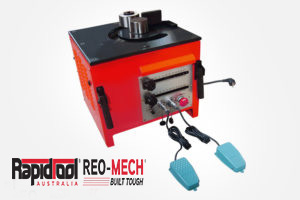
There are several different types of rebar bender machines that are used in the construction industry, each varying in design and engineering, technology, strength, and intended use. While rebar benders are generally made to bend steel bars into shape, different machine types also offer their unique functions and capabilities, depending on what the task calls for.
An electric rebar bender, for instance, is widely used in reinforced concrete construction. Electric bending machines are typecast for the construction market because of their convenience and ease of use. They can bend steel bars and rods into various arcs and angles, depending on the design needs and specifications. They are electrically powered and can process different grades and sizes of steel rods.
A portable rebar bender is compact in size, allowing portability and ease of operation. Portable benders are attractive alternatives to larger mass production machines because they can easily be taken to site for quick adjustments and rebar bending requirements. They are sought after for their flexibility and convenience.
Manual steel benders are still widely used in masonry and concrete construction. Manual benders require manual strength to bend steel bars to shape, but they make the process easier by creating uniform arcs and other simple forms and shapes. They are easy to operate, except for requiring manual strength, as opposed to electric, automatic, and hydraulic machines.
A hydraulic rebar bender, on the other hand, uses hydraulic force to bend steel. Like other types of steel benders, hydraulic benders offer flexibility and it can work with steel bars of varying sizes and diameters, ranging from 4 mm to 60 mm.
An automatic rebar bender machine offers the advantage of automatic numerical control, which automatically adjusts gears for easy switching between the desired/required bending angles. They come with easy to use numerical control panels for more precise rebar bending.

